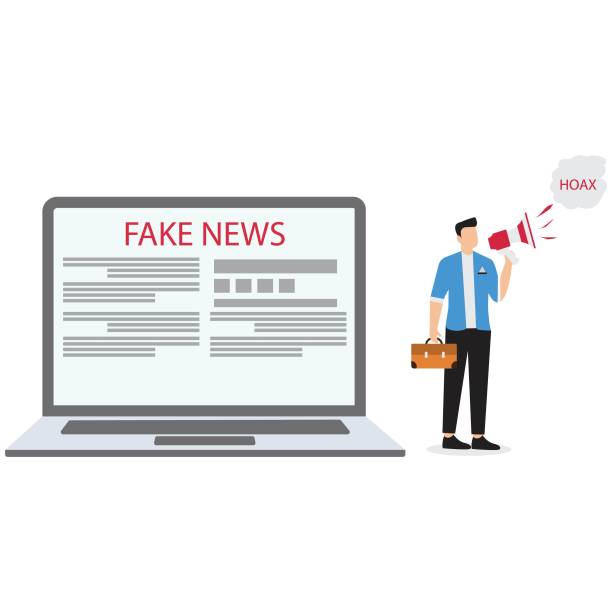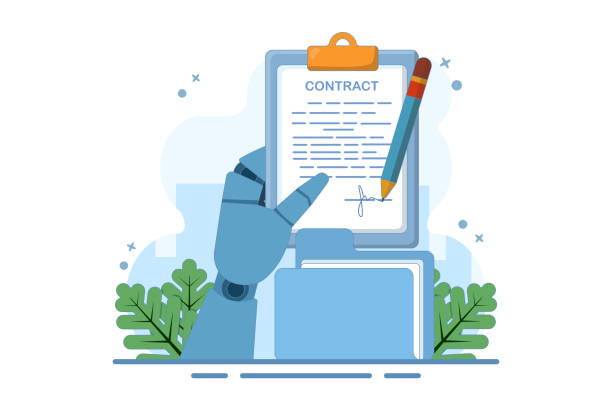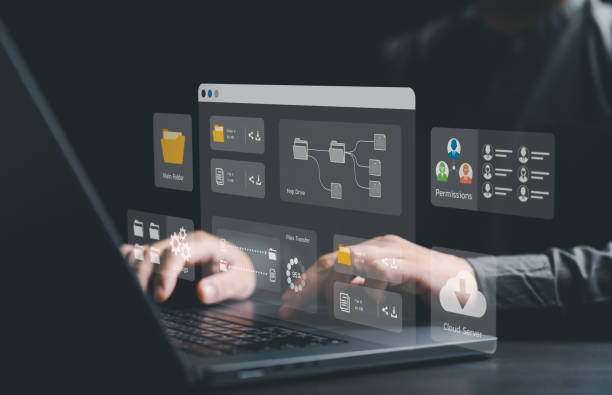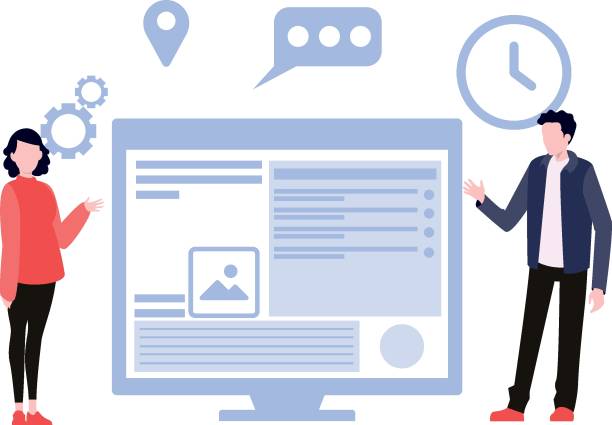Introduction to Multilingual Website Design and Its Importance in the Current Era

In today’s world, where geographical boundaries have less meaning in the virtual space, access to global audiences has become more important than ever.
#Competition #GlobalMarket #InternationalAudience.
Multilingual website design is no longer a luxury option, but a necessity for any business that dreams of expanding its activities.
This approach allows you to convey your message in the native language of users from different cultures, which in turn leads to increased conversion rates and improved user experience.
Understanding this explanatory topic, its importance becomes even more evident.
Imagine a visitor from Japan comes to your website and can read all your product or service information in Japanese; this significantly increases their sense of trust and satisfaction.
This type of website design provides a suitable platform for effective communication with new and diverse markets.
This concept not only includes text translation but also means complete localization of content, including images, videos, and even page layouts for different cultures.
Ignoring this aspect can cause you to miss out on large business opportunities and fall behind other businesses in competition.
In fact, investing in multilingual website design is a strategic investment for the future of your business.
Did you know your company website is the first point of contact for 75% of potential customers?
Your website is the face of your brand. With **Rasaweb** corporate website design services, build an online presence that earns customer trust.
✅ Create a professional and lasting image for your brand
✅ Attract target customers and increase online credibility
⚡ Get a free consultation from **Rasaweb** experts!
Countless Advantages of Implementing a Multilingual Website

Implementing a multilingual website is a gateway to countless international opportunities.
#MarketExpansion #IncreasedSales #Branding.
Among its most important analytical advantages are access to new markets and increased sales potential.
When your site is available in multiple languages, you can introduce your products and services to a wider audience without geographical restrictions.
This leads to a significant increase in incoming traffic and, consequently, an increase in potential customers.
Furthermore, a multilingual website greatly aids in SEO (Search Engine Optimization), as your content ranks for various keywords in different languages in search engines.
This provides a significant competitive advantage for your business and distinguishes you from competitors who only operate in one language.
From the perspective of credibility and branding, demonstrating the ability to communicate with international audiences presents an image of a professional and global company.
This action not only helps attract new customers but also fosters loyalty among existing customers, as they see that your business cares about the diverse needs of users.
In other words, the importance of multilingual website design in building a bridge between your business and different cultures is undeniable and lays the foundation for long-term growth.
This is a smart strategy to achieve bigger goals in today’s competitive world.
Technical Challenges and Solutions in Multilingual Website Design

On the path of multilingual website design, we will face numerous technical challenges that require specialized solutions.
#URL_Structure #Hreflang #ContentManagement.
One of the main concerns is choosing the appropriate URL structure.
Should subdomains (e.g., en.example.com), subdirectories (e.g., example.com/en/), or country code top-level domains (e.g., example.co.uk) be used? Each option has its own advantages and disadvantages, and the choice depends on your SEO goals and strategy.
For instance, subdirectories are generally easier to manage and inherit the authority of the main domain, whereas subdomains may sometimes be treated as separate sites by search engines.
Correct implementation of hreflang tags is also vital so that search engines can display the correct version of content to users in different regions.
These tags help prevent duplicate content and direct appropriate traffic.
Content management on a multilingual site is also a major challenge.
Using robust Content Management Systems (CMS) that support multilingual capabilities, such as WordPress with plugins like WPML, or dedicated platforms, is essential.
These systems allow you to easily manage and update translations.
Furthermore, attention to technical SEO for each language version, including loading speed, mobile compatibility, and an XML sitemap for each language, is very important.
These challenges require precise planning and technical knowledge to ensure the correct and optimal performance of your site in all languages.
Ultimately, attention to technical details in the multilingual website design process will guarantee the long-term success of your project.
| Type of Structure | Example URL | Advantages | Disadvantages | SEO Optimization |
|---|---|---|---|---|
| Subdirectories | example.com/en/ | Stronger SEO (main domain authority), easy management | Requires organized folder structure | High |
| Subdomains | en.example.com | High flexibility, easy separation | Search engines might see them as separate sites | Medium |
| Country Code TLDs (ccTLDs) | example.de | Best for regional SEO, high trust | Complex management, higher cost | Very High |
Content Strategy for Attracting Global Audiences

To attract global audiences, having an appropriate content strategy in the multilingual website design process is crucial.
#Localization #ProfessionalTranslation #CulturalUnderstanding.
Simply translating content word-for-word is not enough; content must be localized.
Localization means adapting content to the culture, values, and social norms of the target audience.
This includes changes in terminology, units of measurement, dates, and even colors and images to align with the cultural sensitivities of the audience.
For example, an image that seems perfectly normal in one culture might be offensive or inappropriate in another.
Therefore, your guide on this path is to choose professional translation and localization teams who are not only fluent in the language but also fully familiar with cultural nuances.
Using machine translators for sensitive or marketing content is strongly not recommended, as they usually cannot correctly convey nuances and tone of voice.
Furthermore, keyword research for each language should be conducted separately, as popular keywords in one language may not have an exact equivalent or be less used in another language.
The content strategy should also include planning for the production of new content in various languages, not just the translation of existing content.
This shows that you are actively serving your global community.
Ultimately, your content should not only be informative but also inspiring and engaging to encourage audiences to stay on the site and take the desired action.
This approach helps you successfully penetrate international markets and establish meaningful connections with your audience.
Does your current corporate website present a worthy image of your brand and attract new customers?
If not, turn this challenge into an opportunity with Rasaweb’s professional corporate website design services.
✅ Significantly improves your brand’s credibility and image.
✅ Paves the way for attracting new leads and customers.
⚡ For a free and specialized consultation, contact Rasaweb now!
Multilingual SEO: A Solution for Visibility in Search Engines

One of the most important educational aspects in the principles of SEO in multilingual website design is ensuring your site’s visibility in search engines for users worldwide.
#National_SEO #Hreflang #URL_Structure.
Multilingual SEO goes beyond keyword translation; it involves technical and content optimization for each language and geographical region.
The most important tool in this regard is the correct use of hreflang tags, which tell search engines like Google, Bing, and Yandex which version of the page is intended for which language and geographical region.
Incorrect use of these tags can lead to duplicate content issues, which harm your site’s ranking.
Additionally, you must perform keyword research separately for each language.
Keywords that are popular in one language may not be used in another language or may have different meanings.
Furthermore, URL structure plays a vital role in multilingual SEO.
As previously mentioned, the choice between subdomains, subdirectories, or country-code domains must be made carefully and based on your SEO goals.
Creating separate XML sitemaps for each language and submitting them to search engine webmaster tools are also important steps.
Optimizing meta tags (title and description) and page content for each language and region, considering local terminology and culture, are other principles of multilingual SEO.
These efforts together help search engines correctly index your content and display it to appropriate users worldwide, ultimately leading to increased targeted traffic and business growth.
User Experience and Its Importance in International Websites

User experience (UX) in multilingual website design is not limited to aesthetic appeal; it addresses the usability and ease with which users interact with the site, regardless of their language and culture.
#UI_Localization #International_Navigation #User_Satisfaction.
Good UX design on a multilingual site means that users can easily switch between languages and find their desired content without confusion.
This includes placing the language switch button in an accessible and clear location, usually at the top of the page or in the main menu.
Additionally, you must ensure that all user interface elements, including forms, buttons, and error messages, are correctly translated and localized.
From a technical perspective, attention to aspects such as writing direction (right-to-left for languages like Persian and Arabic, and left-to-right for most languages) and its impact on page layout and visual elements is crucial.
Fonts must be appropriate for each language and render correctly to maintain readability.
Additionally, dates, currency, and measurement systems must be localized for each region so that users feel the site was designed for them.
User testing with native speakers of each language is essential to identify potential issues and continuously improve the user experience.
An excellent user experience not only encourages users to spend more time on your site but also significantly contributes to increased customer loyalty and ultimately, the growth of your business.
Practical Tools and Platforms for Multilingual Website Design

Choosing the right tools and platforms is a crucial step in multilingual website design.
#ContentManagementSystem #TranslationPlugin #LocalizationServices.
Today, many Content Management Systems (CMS) offer multilingual capabilities or provide this functionality through add-ons and plugins.
WordPress, with plugins like WPML and Polylang, is one of the most popular options, allowing users to easily manage their content in various languages.
News sites and blogs often leverage these tools for rapid content publication in different languages.
Other platforms like Drupal and Joomla also support built-in multilingual capabilities or developed modules, making them suitable for larger and more complex projects.
For e-commerce sites, platforms like Shopify with multilingual apps and Magento offer robust solutions for managing products, descriptions, and prices in different languages.
In addition to CMS, automatic and semi-automatic translation tools can help speed up the translation process, but for sensitive and marketing content, using professional human translators and localization services is essential.
These multilingual website design platforms facilitate the localization process for businesses of all sizes by providing appropriate tools.
| Platform | Multilingual Capability | Ease of Use | Suitable For | Most Famous Plugin/Tool |
|---|---|---|---|---|
| WordPress | Via plugins | High | Blogs, small to medium websites | WPML, Polylang |
| Drupal | Built-in and modules | Medium to High | Large projects, government organizations | Built-in Translation |
| Joomla | Built-in and components | Medium | Corporate websites, portals | JoomFish (deprecated), Falang |
| Shopify | Via add-ons | Easy | Online stores | Shopify Translate & Adapt |
Maintaining and Updating Multilingual Content

Maintaining and updating multilingual website content is an ongoing and vital process to ensure that your site remains accurate and relevant at all times.
#ContentUpdates #TranslationManagement #UserFeedback.
This section emphasizes the importance of planning for continuous translation and localization of new or revised content.
Every time you add new content to your main site or make changes to existing content, its translated versions must also be updated.
This can be time-consuming, especially if your site has a large volume of content.
To facilitate this process, it is recommended to have an efficient Translation Management System (TMS) that allows you to track translations and monitor the status of each language version.
Additionally, close collaboration with translators and localizers is crucial to maintain the quality and accuracy of translations.
User feedback also plays a key role in continuous improvement; if users report errors in translations or localization, they should be addressed promptly.
Furthermore, you should regularly check for broken links and ensure that all language versions are functioning correctly.
A well-maintained multilingual website will not only perform better in terms of SEO but also increase user trust and satisfaction, strengthening your brand’s position in international markets.
Does your current website convert visitors into customers or drive them away? Solve this problem forever with professional corporate website design by Rasaweb!
✅ Build strong credibility and branding
✅ Attract target customers and increase sales
⚡ Get a free consultation now!
Case Studies and Fun Facts in the Multilingual Web World

The world of multilingual website design is full of interesting stories and fun facts that can be thought-provoking and informative.
#Translation_Mistakes #Success_Stories #International_Humor.
Did you know that sometimes a small translation error can turn into a major disaster for an international brand? A famous example is when Pepsi translated its slogan “Come Alive with Pepsi” into Chinese, which became “Pepsi Brings Your Ancestors Back From The Grave”! This example shows why localization, and not just translation, is so vital in multilingual website design.
On the other hand, there are many success stories in the field of successful multilingual website design.
Companies that have carefully localized their websites with a deep understanding of different cultures, have achieved significant success.
For example, Airbnb, which has localized its platform into dozens of languages, has managed to establish a deep connection with its users worldwide.
This company not only translates texts but also uses images and narratives that align with local cultures.
These cases show how, with a little research and attention to detail, one can overcome language and cultural barriers and access new markets.
These tips are not only entertaining but also offer valuable lessons for anyone intending to enter the international web world.
The Future of Multilingual Website Design and Its Outlook

The future of multilingual website design, with advancements in technology and artificial intelligence, presents new and exciting prospects.
#ArtificialIntelligence #NeuralMachineTranslation #VoiceSearch.
An analysis of upcoming trends shows that Neural Machine Translation (NMT) is becoming increasingly accurate and natural, and can play a more prominent role in the multilingual website design process.
This technology can help businesses make their content available in different languages more quickly, although there will still be a need for review and editing by human translators for quality and cultural nuances.
Furthermore, the emergence of voice search and voice assistants like Google Assistant and Siri create new challenges for multilingual SEO.
Website content must be optimized to answer oral questions in different languages.
This requires a deep understanding of how users ask questions in various languages and responding to them naturally and conversationally.
Also, the growth of Virtual Reality (VR) and Augmented Reality (AR) can revolutionize how users interact with multilingual content, where translations and localizations must be provided instantly and in immersive environments.
In summary, the future of multilingual website design lies not only in text translation but also in creating fully localized and personalized experiences for each user, regardless of their language and geographical location.
This trend will create unparalleled opportunities for innovation and expansion on a global scale.
Frequently Asked Questions
| Question | Answer |
|---|---|
| 1. What is multilingual website design? | The process of creating a website whose content is available in multiple different languages so that users from all over the world can interact with the site in their own language. |
| 2. Why should I make my site multilingual? | To expand the market, attract international audiences, improve SEO in global search results, and increase brand credibility and professionalism. |
| 3. What are the methods for implementing a multilingual site? | Using subdomains (e.g., fa.example.com), subdirectories (e.g., example.com/fa/), URL parameters (e.g., example.com?lang=fa), or country domains (e.g., .ir, .de). |
| 4. Is SEO for a multilingual site different? | Yes, it requires international SEO strategies such as using hreflang tags, appropriate URL structure for each language, and keyword research for each language. |
| 5. What should be considered when choosing languages? | Language selection should be based on the target market, audience demographics, and current website traffic analysis data. |
| 6. What are the common problems in multilingual website design? | Problems related to SEO, translation quality, content management, support for Right-to-Left (RTL) and Left-to-Right (LTR) languages, and user experience. |
| 7. What is the role of CMS in multilingual sites? | Modern Content Management Systems (CMS) (such as WordPress with multilingual plugins or Drupal) offer built-in features or powerful plugins for easy content management in multiple languages. |
| 8. How should content translation be done? | Translation should be done by native and professional translators, not just machine translation, to ensure tone, culture, and local idioms are respected. |
| 9. How is language switching done on multilingual sites? | Typically, a Language Switcher is used in the site’s header or footer, allowing users to easily select their desired language. |
| 10. Is responsive design important for a multilingual site? | Yes, responsive design ensures that the site is displayed correctly on any device (mobile, tablet, desktop), which is crucial for international user access and SEO. |
And other advertising services of Rasaweb Advertising Agency
Smart SEO: A fast and efficient solution for increasing website traffic with a focus on attractive user interface design.
Smart Conversion Rate Optimization: A creative platform for improving click-through rates with custom programming.
Smart Direct Marketing: A fast and efficient solution for customer acquisition with a focus on intelligent data analysis.
Smart Content Strategy: A combination of creativity and technology to increase click-through rates through an SEO-driven content strategy.
Smart Digital Advertising: A professional solution for increasing website traffic with a focus on optimizing key pages.
And over hundreds of other services in the field of internet advertising, advertising consultation, and organizational solutions
Internet Advertising | Advertising Strategy | Advertorials
Resources
Multilingual Website Design Guide
International SEO
Website Design Guide
Business Globalization
? Build the future of your online business with Rasaweb Afarin Digital Marketing Agency. By providing specialized services including SEO-optimized website design, Search Engine Optimization (SEO), and professional social media management, we help you on your path to growth and success. Contact us today and transform your business!
📍 Tehran, Mirdamad Street, next to Bank Markazi, Kazerun Jonubi Alley, Ramin Alley No. 6




